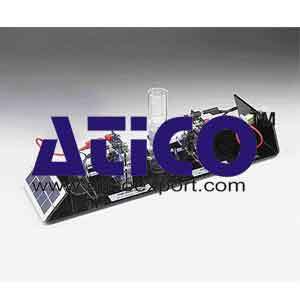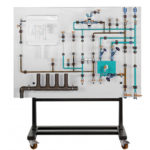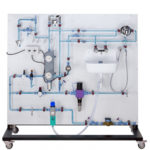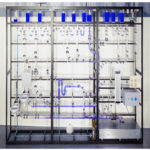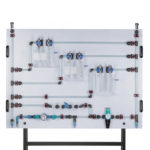Hydrogen Fuel Cell
Principle – Functionality of Hydrogen Fuel Cell
- The hydrogen fuel cell is a clean and efficient way to store energy and produce electricity.
- With this system, students have a real example of new energy technology.
- Using a bulb or solar energy, the solar panel in this system converts the light energy into electricity.
- This energy is then used for electrolysis, which produces oxygen and hydrogen from water. The hydrogen is stored in a tank to be used later with the fuel cell.
- The hydrogen is used as a fuel by the fuel cell, the oxygen being the combustive. The process that takes place in the fuel cell can be considered the reverse reaction to the electrolysis of water: water, electricity and heat is then produced from hydrogen and oxygen.
- In the case of this system, the electricity produced by the fuel cell is used to operate a ventilator. This fuel cell has a performance level of about 50%.
- The electrolyzer, like the fuel cell, is based on a proton exchange membrane (PEM). This membrane is composed of a solid polymer electrolyte positioned between 2 catalyzers. These form the cell’s cathode and anode.
- One of the advantages of this type of battery is that it functions from the ambient temperature, as the start-up time is almost instantaneous.
Teaching objectives
- Electricity production from a solar panel.
- Current and voltage characteristics of a solar panel.
- Current and voltage characteristics of an electrolyzer
- Performance of an electrolyzer
- Current and voltage characteristics of a fuel cell.
Technical specifications
- Dimensions: 15 cm x 53 cm x 18 cm.
- Solar cell: 2,5 V – 300 mA.
- Voltage of the fuel cell: 0.3 – 0.9 V.
- Power of the ventilator: 20 mW.
- Voltage sensor.
- Current sensor.
- Interface: Science Workshop 500 or 750

